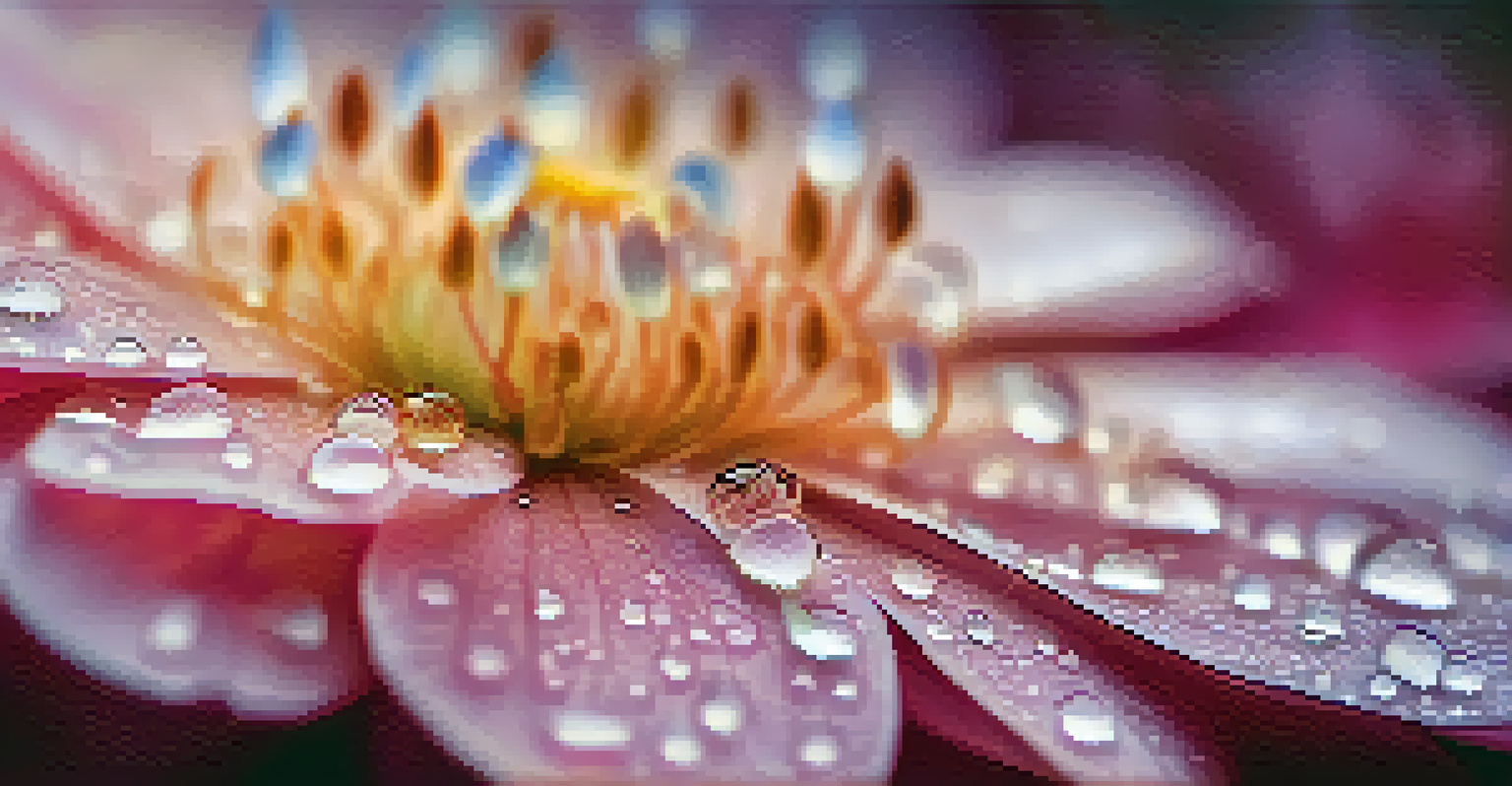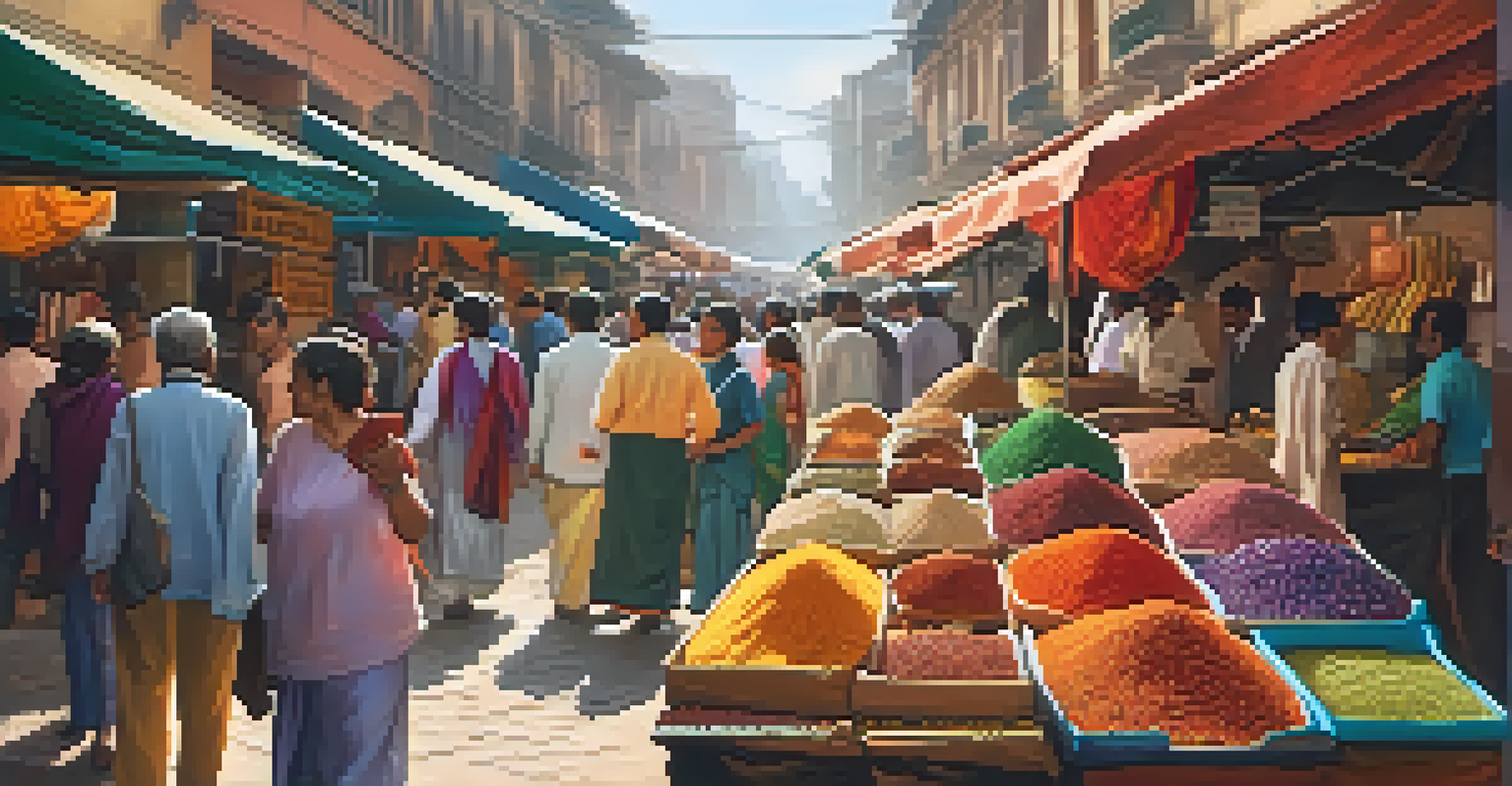Recommended Lenses for Travel Photography: A Complete Guide

Why Choosing the Right Lens Matters for Travel Photography
When it comes to travel photography, the lens you choose can make or break your shots. A great lens will help you capture the essence of your adventure, from sweeping landscapes to intimate street scenes. The right lens allows you to express your vision clearly and effectively, ensuring that your memories are beautifully preserved.
The best camera is the one that’s with you.
Different lenses serve different purposes. For instance, a wide-angle lens is perfect for capturing expansive vistas, while a telephoto lens brings distant subjects closer, making it ideal for wildlife photography. Understanding the unique strengths of each lens empowers you to select the best one for every travel scenario, enhancing your overall experience.
Ultimately, the right lens not only enhances your photography but also influences how you interact with your environment. You might find yourself exploring new angles or getting closer to subjects you’d typically overlook, transforming your travel experience into something truly memorable.
Wide-Angle Lenses: Perfect for Landscapes and Architecture
Wide-angle lenses are a staple in travel photography, especially when it comes to capturing breathtaking landscapes or impressive architecture. These lenses typically range from 14mm to 35mm and allow you to fit more of the scene into your frame, creating a sense of depth and grandeur. Imagine standing before a towering mountain range and being able to capture the entire vista in one shot.

They’re not just for grand vistas, though. A wide-angle lens can also be incredibly effective in tight spaces, such as cramped city streets or bustling markets. By allowing you to get closer to your subject while still fitting in a wider scene, these lenses help convey the atmosphere of your travel destination.
Choose the Right Lens for Travel
Selecting the appropriate lens enhances your photography and enriches your travel experience.
However, it’s important to be mindful of distortion when using wide-angle lenses. If you get too close to a subject, they may appear exaggerated in size compared to the background. Learning to control this effect can take your travel photos from ordinary to extraordinary.
Prime Lenses: The Sharpest and Most Versatile Option
Prime lenses, which have a fixed focal length (like 35mm or 50mm), are renowned for their sharpness and image quality. They tend to perform exceptionally well in low-light conditions, making them ideal for capturing the enchanting atmosphere of evening markets or candlelit dinners. With fewer glass elements, prime lenses often produce cleaner images with less distortion.
Photography is the story I fail to put into words.
While they may lack the versatility of zoom lenses, prime lenses encourage creativity. The fixed focal length challenges you to physically move closer or further away from your subject, prompting you to explore your surroundings more actively. This can lead to unique compositions that you might not have captured with a zoom lens.
In travel photography, a 50mm prime lens is often dubbed the 'nifty fifty.' It mimics the human eye's perspective, making it a fantastic choice for portraits, street photography, and everything in between. This lens can quickly become your go-to for capturing the heart of your travels.
Zoom Lenses: Flexibility for Varied Travel Scenarios
Zoom lenses offer remarkable flexibility, allowing photographers to switch between focal lengths without changing lenses. This can be a game-changer when you’re traveling and want to minimize the gear you carry. A standard zoom lens, like a 24-70mm, can handle a wide range of situations from landscapes to portraits, making it a popular choice among travelers.
The convenience of a zoom lens means you can quickly adjust your framing without missing a moment. For example, if you're at a wildlife reserve and suddenly spot an animal in the distance, a zoom lens lets you capture that fleeting moment without needing to swap lenses. This adaptability can be particularly useful in dynamic environments.
Wide-Angle Lenses for Vistas
Wide-angle lenses capture expansive landscapes and can also work well in tight spaces.
However, it’s worth noting that zoom lenses can sometimes lack the sharpness of prime lenses, especially at the extremes of their focal range. Still, with advancements in lens technology, many modern zoom lenses deliver impressive image quality that meets the needs of most travel photographers.
Telephoto Lenses: Ideal for Wildlife and Portraits
Telephoto lenses, typically ranging from 70mm to 300mm or more, are perfect for capturing subjects from a distance. Whether you’re photographing wildlife on a safari or candid moments at a bustling festival, these lenses allow you to get close without intruding on your subjects. This is especially important in sensitive situations, such as wildlife photography, where maintaining a respectful distance is crucial.
In addition to wildlife, telephoto lenses excel in portrait photography. They create flattering compression, helping to isolate your subject against a beautifully blurred background. This effect can add a professional touch to your travel portraits, making them stand out in your photo album.
While telephoto lenses are often bulkier and heavier than other options, the unique perspectives they offer are worth the extra weight. If your travel itinerary includes nature reserves or cultural events, a telephoto lens can be an invaluable addition to your kit.
Macro Lenses: For Capturing Intricate Details
Macro lenses are designed specifically for close-up photography, allowing you to capture the fine details of subjects like flowers, insects, or even food. With the ability to focus on subjects just a few inches away, macro lenses reveal a world often overlooked by the naked eye. This makes them a fantastic tool for showcasing the beauty of local flora and fauna during your travels.
Using a macro lens can also add depth to your travel photography portfolio. By incorporating detailed shots alongside wide landscapes and portraits, you create a more well-rounded narrative of your journey. Imagine capturing the texture of a flower petal or the vibrant colors of a local market's spices – these details tell a richer story.
Macro Lenses Reveal Hidden Details
Macro lenses allow you to focus on intricate details, adding depth to your travel photography portfolio.
However, macro photography often requires steady hands or a tripod to ensure sharp images, especially at high magnifications. With a little practice, you can master this technique, elevating your travel photography and offering viewers a fresh perspective on familiar subjects.
Lens Accessories: Enhance Your Travel Photography Experience
In addition to selecting the right lens, consider investing in accessories that can enhance your travel photography experience. Lens filters, for example, can help reduce glare, enhance colors, or protect your lens from scratches and dust. A polarizing filter can make skies appear bluer and reduce reflections on water, adding vibrancy to your travel shots.
A lens hood is another handy accessory to carry. It helps minimize lens flare, ensuring your images remain crisp and clear, especially in bright sunlight. Additionally, having a lens cleaning kit on hand can keep your glass spotless, which is especially important when traveling in dusty or humid environments.

Finally, if you're planning to do a lot of walking, consider a comfortable camera strap or harness system. This not only eases the burden of carrying your gear but also keeps your camera easily accessible for those spontaneous photo opportunities that often arise during travels.
Final Thoughts: Choose the Right Lens for Your Travels
As you gear up for your next adventure, remember that the right lens can significantly impact your travel photography. From wide-angle lenses that capture sweeping landscapes to macro lenses that reveal intricate details, each lens has its unique advantages. Take the time to consider your travel style and the types of images you want to create.
It’s also worth experimenting with different lenses on your travels. Often, you'll find that a combination of lenses works best for various situations. This approach not only enhances your versatility as a photographer but also enriches your travel experience as you learn to see the world through different perspectives.
Ultimately, the goal of your travel photography is to tell your story and preserve your memories. With the right lenses in your bag, you’ll be well-equipped to capture the magic of your journeys, turning fleeting moments into lasting memories.